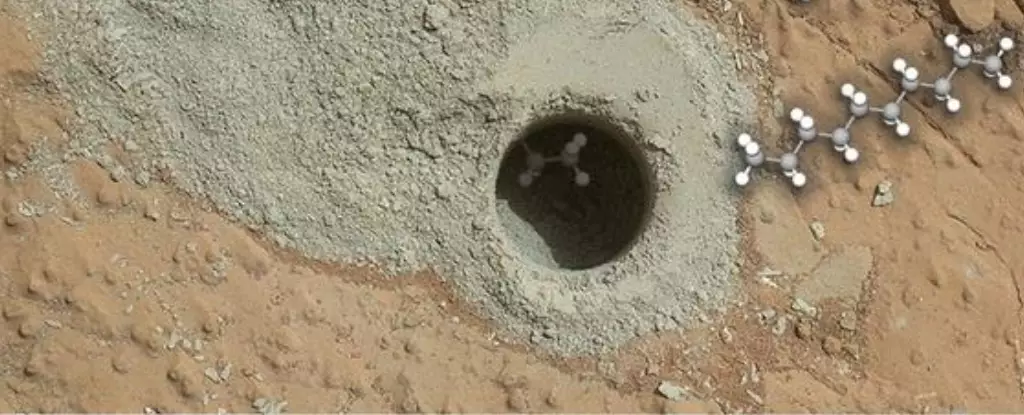The recent discovery of carbon chains consisting of up to a dozen atoms on Mars ignites a spark of curiosity that is impossible to dismiss. This finding, made possible by the NASA Curiosity rover and an international team of scientists led by Caroline Freissinet, marks a significant milestone in our quest to explore the enigmatic red planet. For ages, Mars has been the subject of speculation regarding its potential to harbor life. The detection of these organic compounds—albeit still at a nascent stage of understanding—offers tantalizing hints at the complexities that could have existed in its ancient past.
These long carbon molecules may represent more than mere geological anomalies; they could potentially unveil vestiges of life itself. Our ability to identify these chains showcases not only the advancements in technology but also the persistent human desire to probe beyond our terrestrial confines in search of answers.
Organic Molecules: A Double-Edged Sword
However, there’s a dichotomy inherent in this discovery. On one hand, these carbon chains might be an indication of life… or they might not. The reality is that these organic compounds could very well have formed through abiotic processes, which gives a bittersweet tinge to the excitement surrounding their existence. It raises a profound question: how can we differentiate between life’s handiwork and the natural chemistry of an alien environment?
The scientific community needs to tread cautiously. It’s paramount that we approach these findings with an analytical lens, rather than getting swept away by romanticized visions of Martian life. For those of us who straddle the line between skepticism and hope, the evidence presented is not conclusive but a waypoint on a much longer journey toward understanding whether Mars ever had life.
Deciphering the Martian Past through Chemical Analysis
Curiosity’s methodical movements through the Gale crater have revealed layers of sediment that offer insights into Mars’ geological history. By extracting samples from a mudstone deposit named Cumberland, researchers leveraged experimental techniques involving high-temperature gas chromatography to unveil compounds that feature carbon chains like decane, undecane, and dodecane. This painstaking attention to detail in the analytical process will pave the way for more intricate studies into the Martian soil composition.
What stands out from this research is the potential for an array of complex indicators pointing toward biosignatures. The presence of chlorinated and sulfur-containing compounds alongside the carbon chains begs for further inquiry. If these compounds can be generated under Mars-like conditions from simpler organic materials, the implications could be monumental. This opens up a Pandora’s box of possibilities, and while some may argue against quick conclusions, the fascination of what could lie ahead cannot be understated.
Life’s Chemical Signature on Earth and Beyond
Drawing parallels between what we observe on Mars and the biochemical intricacies of Earth’s own organisms only deepens the intrigue. Carboxylic acids, integral components of terrestrial biochemistry, may have counterparts on the red planet. The researchers suggest that while abiotic mechanisms can indeed produce these acids, their presence strongly mirrors biological processes known to us. This complication beckons a reevaluation of what precisely constitutes evidence of life.
It’s easy to get engrossed in the narrative of extraterrestrial life; after all, the dream of life beyond Earth has inspired countless generations. Yet this passion must be grounded in scientific rigor. As we peel back the layers of Martian geology and chemistry, we must also cultivate a culture of inquiry that respects both the known and the unknown.
Charting a Course for Future Exploration
Our present understanding serves as a springboard for future explorations. The findings from Curiosity could steer subsequent missions toward specific regions of Mars where conditions may allow for further discovery. With each new revelation, the narrative of Mars shifts; we transition from a barren wasteland to a vibrant historical archive, full of untold stories waiting to be told.
While we remain cautious about declaring Mars a cradle of life, the allure of the unknown propels us forward. The excitement surrounding the discovery of carbon chains is a reflection of our innate curiosity as humans. Despite the ambiguity surrounding the implications of these findings, they remind us of the infinite possibilities that lie between the stars.


Leave a Reply